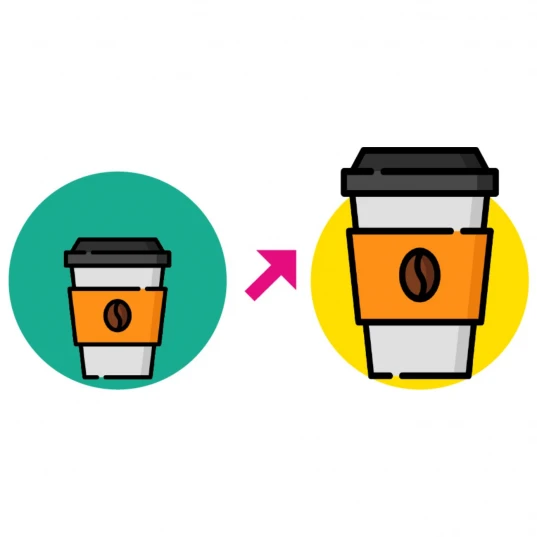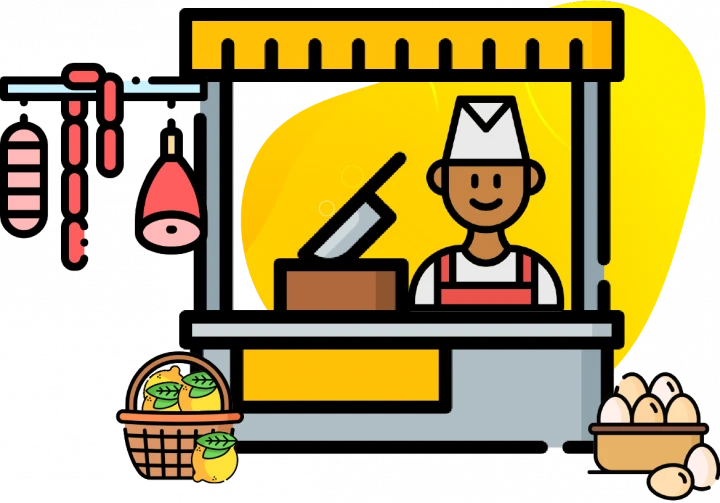Privacy Notice - Scope
We take your privacy seriously and are committed to maintaining the trust and confidence of our clients, visitors to our website and subscribers to our newsletter. Maintaining the security of your data is critical and we have implemented measures to ensure your privacy rights are respected and applied. We commit to process your data fairly, legally and to be transparent about how we do so.
This notice, which applies whether you use our services or use our website, explains our approach to data integrity and your individual rights.
By using our services, you understand the collection, use and transfer of your information under the terms of this notice.
Put simply, we set out what we are going to do with your data in this Privacy Notice.
We ask you to read this Privacy Notice to ensure you understand the way that Smarta will process your data.
We provide the option to opt into the different marketing options that you prefer.
The processing of personal data is governed by the EU General Data Protection Regulation 2016/679 (GDPR) and the UK General Data Protection Regulation.
The notice may change from time to time so please check for updates.
If you need further details or are unsure in any way, please contact us at hello@gosmarta.com.
Who are we?
Smarta is a trading name of Transmit Start-Ups Ltd, which is a Limited Company registered in England. (referred to as “Smarta”, “we”, “our” or “us” in this notice).
Our registered company number is 08702257.
Our registered office is Northern Design Centre, Baltic Business Quarter, Abbott's Hill, Gateshead, NE8 3DF.
What personal information do we collect and process?
Smarta is what is known as the controller of the personal data you provide to us. We collect personal data about you which will (where relevant) also include any special types of information or location-based information.
We collect and process your data in the following circumstances:
When you use our services
When you register to join Smarta or access our eLearning/online courses
When you join the small business directory
When you use our website
When you sign up for our mailing list
When you complete the contact form on our website
When you contact us through other means such as email, telephone, or web chat
Smarta will collect the following information about you:
Your name
Your contact details: postal address, telephone number(s) and email address(es), including personal contact details and business contact details (where relevant)
Your date of birth (where relevant)
Your gender (where relevant)
Your ethnicity (where relevant)
Your qualification levels (where relevant)
Your employment status (where relevant)
Other publicly available personal data, including any which you have shared via a public platform (such as a LinkedIn profile, Twitter feed or public Facebook page) (where relevant)
Your device’s IP address
Your online browsing activities on our website
Your communication and marketing preferences
Your interests, preferences, feedback and survey responses
Your location
Your correspondence and communications with us
Information about your business
Smarta deliver some of our services under contract on behalf of other organisations, for example to offer business coaching, mentoring or consultancy services, or access to eLearning. In some cases we may receive data about you from our customers or other third parties. For information on how our customer uses your personal data, including how we fit into that processing, you should review their privacy notice or contact them for more information.
Why do we collect and process your personal information?
We only collect and process the information needed to effectively provide our services to you, as well as for contact and communication purposes.
We will use your personal information as part of the reporting process we have agreed with any partner organisations we provide services for.
We will use your personal information as part of our internal reporting processes.
The lawful basis for processing your personal information
Legitimate interest
We will collect, hold and process your personal data on the basis of legitimate interest where it is necessary in order for us to fulfil our needs as a business and to be able to provide you with our services, including, but not limited to:
To send you information about our services
To communicate with you about your enquiry
Facilitating introductions to our partners, or network of consultants, mentors and coaches
Communicating and reporting to the organisations for whom we are contracted to deliver support
Handling customer contacts, queries, complaints or disputes
Promoting, marketing and advertising our products and services (for business-to-business relationships only)
Understanding our customers’ behaviour, activities, preferences, and needs
Improving existing products and services and developing new products and services
Consent
We will seek your consent to hold and process your data when you sign up to Smarta or to our mailing list. If you choose not to sign up to our mailing list we will still communicate with you when necessary as part of our contractual obligations.
You remain in control of the personal data you share with us. You can update your personal details in your Smarta account on gosmarta.com and in your eLearning account on mysmarta.com. You can change your preferences at any time by choosing whether you want to give consent to your data being processed for specific types of communication and / or communication channels. You can unsubscribe from our email newsletters by clicking the ‘unsubscribe’ option at the bottom of the email and if you wish to manage or amend your preferences, you can send an email to hello@gosmarta.com.
Vital Interest
We will use your personal information to contact you if we reasonably believe that the processing of your personal data will prevent or reduce any potential harm to you. This type of notification is in your vital interest.
Legal Obligation
We will use and process your personal data to comply with our legal or regulatory obligations, if it is genuinely needed for law enforcement, to identify you as an individual if you contact us, or to verify the accuracy of your data. This includes effectively handling any legal claims or regulatory enforcement actions taken against us.
Your personal data will also be used in situations that protect you, our customers, employees and other individuals to maintain their safety, health and welfare.
Contract
We will use and process your personal data where it is necessary for a contract we have with you, or because you have asked us to take specific steps before entering into a contract.
How is your personal information used?
Below we have set out the reasons we use your personal data and the lawful basis for each use.
How we use your personal information | Lawful Basis |
To effectively communicate with you | Legitimate interest |
To respond to your enquiries | Legitimate interest |
To enable us to manage service interactions with you | Legitimate interest / Contract |
To ensure compliance with our contractual obligations, including auditing and reporting, we have in providing our service to you | Legitimate interest / Contract |
To make our website and other social media content available to you | Legitimate interest |
To assess your eligibility for our services and those that we deliver on behalf of other organisations | Legitimate interest |
To contact you (with your agreement) electronically about promotional offers and services which may interest you | Consent |
For market research purposes and to better understand your needs | Legitimate interest |
To verify your identity | Legal obligation |
For crime and fraud prevention, detection and related purposes (if mandated by law) | Legal obligation |
Where we have a legal right or duty to use or disclose your information (for example in relation to an investigation by a public authority or in a legal dispute) | Legal obligation |
To test new systems and check upgrades to existing systems to improve our service delivery | Legitimate interest |
To help improve our products and services, for quality control, security, internal record keeping and other business needs | Legitimate interest |
To effectively manage our business and our relationships with you, partners and consultants | Legitimate interest |
Certain types of personal information, such as gender and ethnicity, are used only by aggregating the information for reporting requirements, and for the purposes of monitoring and promoting equal opportunities.
Where your personal information is stored and who we share it with
Your data may be shared with some of our service providers, which allow us to carry out our services, or with other third parties as outlined in this section. This Privacy Notice does not cover the processing of your data by these third parties. For information on how a third party processes your personal data, please refer to their privacy notices.
Your information is stored on dedicated hardware used by Smarta and all data is held and backed up within the UK or EU, is covered by comparable data protection standards (Adequacy) or is covered by the EU SCCs + UK Addendum.
To deliver a full range of services to you, it may on occasion be necessary for us to share your data outside of the European Economic Area. This will typically occur when service providers are located outside the EEA or if you are based outside the EEA. These transfers are subject to special rules under GDPR and UK GDPR.
If this happens, we will ensure that the transfer will be compliant with data protection law and all personal data will be secure. Our standard practice will be to use the EU SCCs + UK Addendum which has been approved by the European Commission and UK Information Commissioner’s Office for such transfers. Those clauses can be accessed on the European Commission website and the UK Information Commissioner’s website.
IT service providers
In order to make certain services available to you, we will share your personal data with our IT service providers. We use IT services providers for activities such as email communication, calendar invites, file storage, customer relationship management, email marketing, customer journey management, and task processing.
Website data is stored within a MariaDB database in a secure hosting environment. The only way to access the database is via a server console or via SSH. Images and assets are securely hosted on a service called S3 - which is an Amazon Web Service (AWS) service. Only authenticated users within the site have access to push files to this location.
We only allow our service providers to handle your personal data when we have confirmed that they apply appropriate data protection and security controls. We also impose contractual obligations on service providers relating to data protection and security, which mean they can only use your data to provide services to us and to you, and for no other purposes.
Partners and suppliers
Where relevant for the delivery of services we will also share your personal data to organisations who contract us to deliver services, and to our network of consultants, coaches and mentors if you are working with one. We will only share your contact details with such partners for the purposes of delivering services to you or to fulfil contractual obligations such as reporting.
We only allow our partners and suppliers to handle your personal data when we have confirmed that they apply appropriate data protection and security controls. We also impose contractual obligations on partners and suppliers relating to data protection and security, which mean they can only use your data to provide services to us and to you, and for no other purposes.
Other third parties
Aside from our service providers and partners, we will not disclose your personal information to any third party unless we are legally obliged to do so, or you provide your consent for us to do so. We will never sell or rent our customer data to other organisations for marketing purposes.
Examples of where we may be legally obliged to share your personal information include:
Governmental bodies, regulators, law enforcement agencies, courts/tribunals and insurers where we are required to do so;
To comply with our legal obligations;
To exercise our legal rights (for example in court cases);
For the prevention, detection, investigation of crime or prosecution of offenders; and
For the protection of our employees and customers.
How we keep your personal information secure
We are committed to keeping your personal data safe and secure.
Our security measures include:
Encryption of data
Back up of data
Password management
Implementing risk management and data impact assessment analysis
Regular cyber security assessments of all service providers who may handle your personal data
Security controls which protect our IT infrastructure from external attack and unauthorised access
Internal policies setting out our data security approach and training for staff.
Only authorised and trained personnel can access your personal information if required to do so as part of their legitimate job role.
Website security and backups
Our website has HTTPS encryption via a Let’s Encrypt SSL certificate to ensure any data passed between your browser and the web server (where this website is hosted) is encrypted. When you are on a secure page, a lock icon will appear on the bottom of web browsers such as Microsoft Edge, Google Chrome and Apple Safari.
This website and its database are automatically backed up every day via our hosting provider AWS (Amazon Web Services). Backups are stored for 90 days in the EU Region.
How long we keep your personal information
We will not retain your data for longer than necessary for the purposes set out in this notice.
We are required by law to keep some information for a minimum period e.g. financial information for tax purposes.
Different retention periods apply for different types of data, however the longest we will normally hold any personal data is six years after we have fulfilled the service to you. Where there is no legal requirement, or a business reasons such as the fulfilment and management of a contractual agreement, we will retain personal information for only as long as necessary to deliver our services and respond to any subsequent communications.
As long as you wish to have a membership on the Smarta platform, we will retain your data for that purpose.
You can update, amend or request deletion of your personal information at any time (see below).
Automated decision making, including profiling
We do not use automated decision making or engage in profiling activity.
When do we collect your information?
Website forms
Our website has forms built-in to allow you to interact with the site via the submission of data. When you use our forms, the information submitted is securely stored in the website’s database. Your personal data stored in the website’s database will be automatically deleted from here after five years. Your personal data is encrypted by the website.
The website is built using a framework called Laravel (it is an open-source PHP MVC framework for bespoke platform development).
The forms are built within this stack using VueJS, form data is submitted via Axios (AJAX HTTP requests) to a controller that parsers the data and stores in within a data store. Some forms are also built in the HubSpot platform.
Sensitive data and passwords are encrypted using OpenSSL and the AES-256-CBC cipher.
Mailing list
When you subscribe to our newsletter, we collect your email address and name so that we can correspond with you. Your personal data will be shared with the service provider that facilitates our sending of our newsletters. You can request to be removed from our mailing list at any time by clicking ‘unsubscribe’ in any newsletter/mailout or by contacting us.
Ongoing communication
We will also collect additional information from you as we communicate with you in order to deliver our services. For example, we will (where relevant) collect documentation from you via email.
Cookies
Like most websites the Smarta website uses cookies to collect information. Cookies are small data files which store information on your browser, your computer, or other connected devices (such as smart phones or tablets).
How do I manage cookies?
When you visit our website only strictly necessary cookies are applied. You can then manage which additional cookies are applied using the pop-up window. After cookie settings are applied your preferences can still be changed by clicking the black circle icon in the bottom left of your browser window.
Alternatively, you can set your browser to block cookies. Please check your browser for instructions on how to do this.
Use of cookies
The main purposes for which cookies are used are:
For technical purposes essential to effective operation of our websites, particularly in relation to site navigation.
To improve your experience on our website.
To enable us to collect information about your browsing patterns, including to monitor the success of conveying our information to you.
Our website does not store any information that would, on its own, allow us to identify individual users without their permission. Any cookies on this website are used either solely on a per session basis or to maintain user preferences. Cookies are not shared with any third parties.
Online data management (analytics and security)
If you accept non-essential marketing cookies when using our website, we use a third-party service, Google Analytics, to collect standard internet log information and details of visitor behaviour patterns.
We collect information about your computer and about your visits to and use of this website (including your IP address, geographical location, browser type, referral source, length of visit, entry and exit points and the number of page views).
We do this to find out things such as the number of visitors to the various parts of the site.
This information is only processed in a way which does not identify anyone.
We do not make and do not permit Google to make, any attempt to find out the identities of those visiting our website.
If we do ever want to collect personally identifiable information through our website, we will be upfront about this. We will make it clear when we collect personal information and will explain what we intend to do with it.
Your rights in respect of the personal information we hold
We fully support and facilitate the ability of people to exercise their rights.
If you wish to correct, complain, object, or otherwise control the data we hold please contact us and we will respond accordingly.
Please contact us if you have any questions about how your personal information is being used or if you are unhappy about our service or anything we do. We will do our best to resolve the issue.
An overview of your different rights
You have the right to request:
Access to the personal information we hold about you, free of charge.
Corrections to your personal information when it is inaccurate, out of date or incomplete.
Erasure of your personal information, for example, when you withdraw consent, or object and we have no legitimate overriding interest, or once the purpose for which we hold the personal information has come to an end.
Obtain and reuse your personal data for your own purposes across different services (known as data portability).
That we stop using your personal information for direct marketing (either through specific channels, or all channels).
That we stop any consent-based processing of your personal information after you withdraw that consent.
Whenever you have given us your consent to use your personal information, you have the right to change your mind at any time and withdraw that consent.
Where we rely on our legitimate interest
In cases where we are processing your personal information on the basis of our legitimate interest, you can ask us to stop for reasons connected to your individual situation. We must then do so unless we believe we have a legitimate overriding reason to continue processing your personal information.
Direct marketing
You have the right to stop the use of your personal information for direct marketing activity through all channels, or selected channels. We must always comply with your request.
How you can make a request about your data subject rights
You can make a request related to any of the rights listed above by contacting us using the details below.
We will respond to you as soon as possible, and always within one month of receipt of the request.
To protect the confidentiality of your personal information, we will ask you to verify your identity before proceeding with any request you make under this Privacy Notice. If you have authorised a third party to submit a request on your behalf, we will ask them to prove they have your permission to act.
Getting in touch with Smarta
We can be contacted at:
Smarta / Transmit Start-Ups Ltd
Northern Design Centre
Baltic Business Quarter
Abbott's Hill
Gateshead
NE8 3DF
Email: hello@gosmarta.com
The Supervisory Authority in the UK is the Information Commissioners Office (ICO).
Smarta / Transmit Start-Ups Ltd can be found on the Data Protection Register. The registration number is ZA047144.
Complaints
If you would like to make a complaint about the way your personal data has been handled, you can contact us using the details given above.
Alternatively, you can refer your complaint to the ICO








